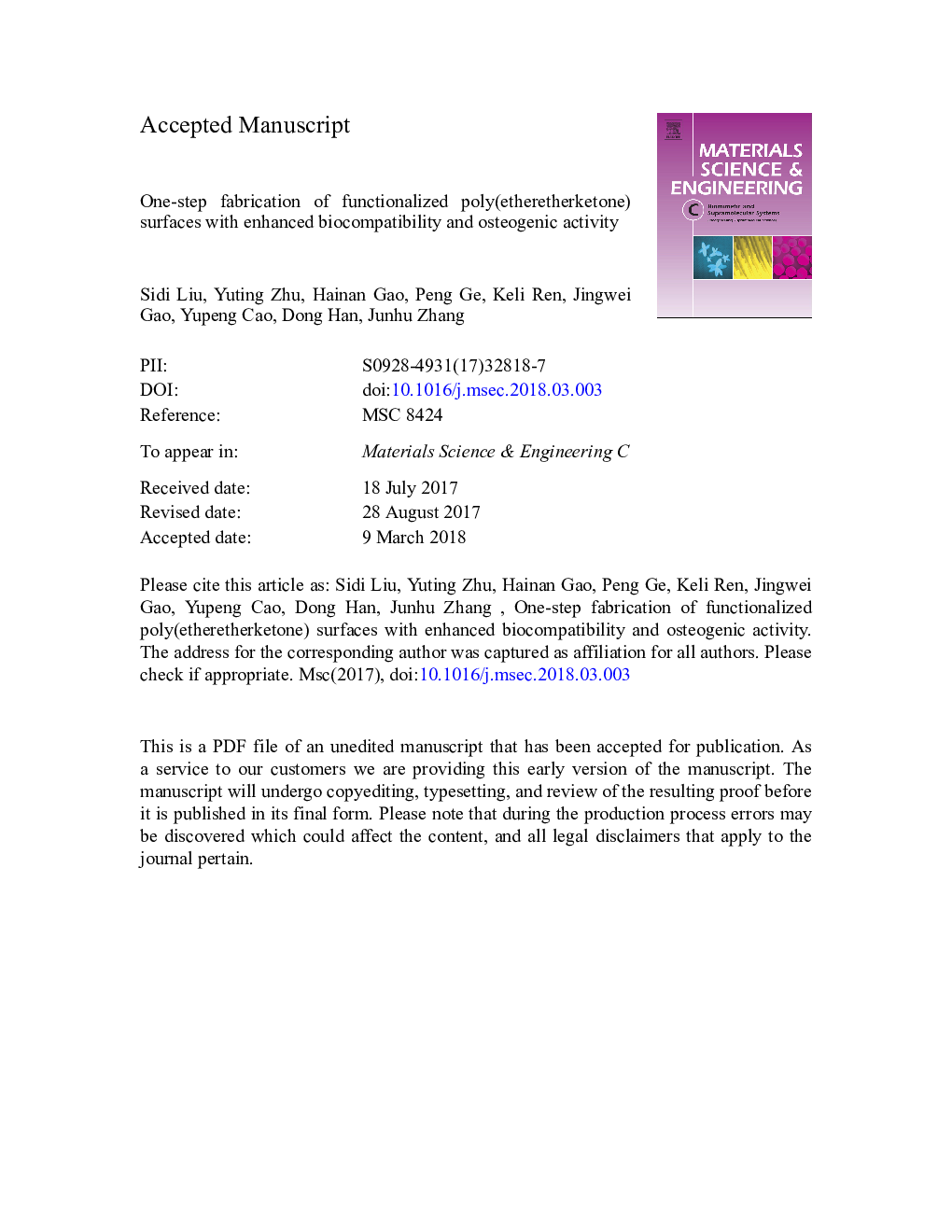| Article ID | Journal | Published Year | Pages | File Type |
|---|---|---|---|---|
| 7866367 | Materials Science and Engineering: C | 2018 | 26 Pages |
Abstract
Polyetheretherketone (PEEK) has an elastic modulus similar to that of the bone; however, its use as a material for bone repair is limited by bio-inert surface chemistry and poor osteogenesis-inducing capacity. To address this issue, the PEEK surface was activated by ultraviolet radiation-induced grafting of methacrylated hyaluronic acid (MeHA) and titanium dioxide (TiO2) nanofibers via a one-step process. The modified PEEK surface was characterized by X-ray photoelectron and Fourier-transform infrared spectroscopy, and the extent of surface modification was evaluated by measuring static contact angles. Atomic force microscopy revealed that the PEEK surface grafted with electrospun TiO2 had abundant nanofibers and a roughness that was comparable to that of human cortical bone. In vitro experiment, rat bone mesenchymal stem cells showed increased adhesion, proliferation, and osteogenic differentiation capacity on TiO2-modified as compared to unmodified PEEK. Thus, PEEK that is surface-modified with electrospun TiO2 and MeHA has enhanced biocompatibility and can be an effective material for use in orthopedic implants and medical devices.
Related Topics
Physical Sciences and Engineering
Materials Science
Biomaterials
Authors
Sidi Liu, Yuting Zhu, Hainan Gao, Peng Ge, Keli Ren, Jingwei Gao, Yupeng Cao, Dong Han, Junhu Zhang,
